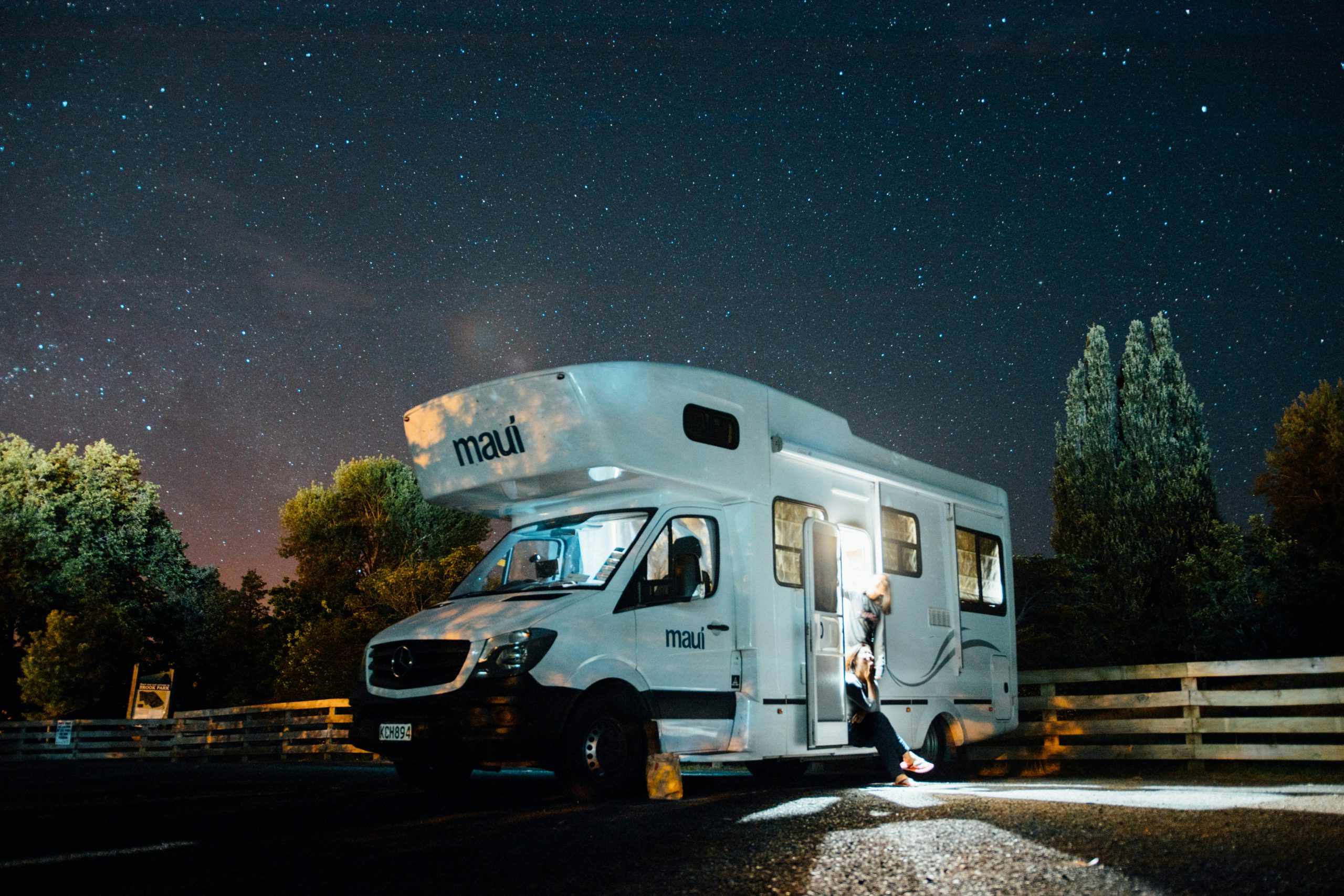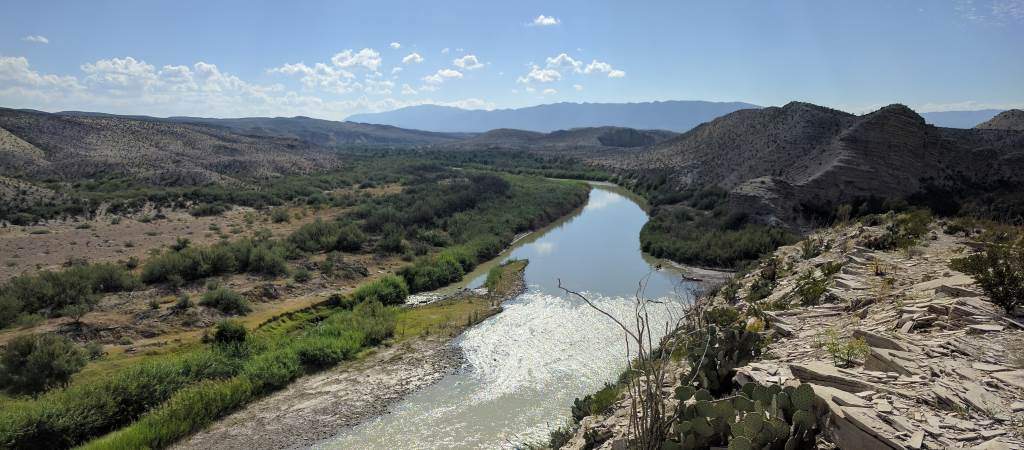Folks told me that Texas was flat and boring. Big Bend National Park single-handedly proves them wrong. It is a gorgeous landscape of mountains, canyons, deserts, and rivers. It is home to a range of wonderful wildlife. And it all makes for one incredible adventure. So get your crew ready and read about the awesome RV adventures you could have in Big Bend.
Day One: Settle into Lajitas
After a long drive, you arrive in Lajitas, Texas, and settle into the Maverick Ranch RV park – which will be your base of operations. Located next to the Maverick Ranch Golf course, it has great scenic views and access to resort accommodations, all at a great price. Late fall and winter are a great time to go! If you are lucky, seventy degrees and clear skies will greet your arrival.
Rather than head straight for Big Bend, check out the local scene before dark. The town of Lajitas consists of no more than a general store and a few buildings. Plus, the duly elected mayor of Lajitas is locked up right next to the general store, safely behind bars. In the store, you can buy some peanuts to bribe him with. Though being a goat, his ability to influence legislation is minimal. The only way he’s passing a law is if he eats it first.
Just up the road, you will find the Barton Warnock Visitors Center which is part of Big Bend Ranch State Park. Explore the walled-in garden and exhibits, learning the names of the local plants and animals as well as information about the habitat they live in. You can look forward to seeing how many of them you can spot and name in the wild during your time in Big Bend.
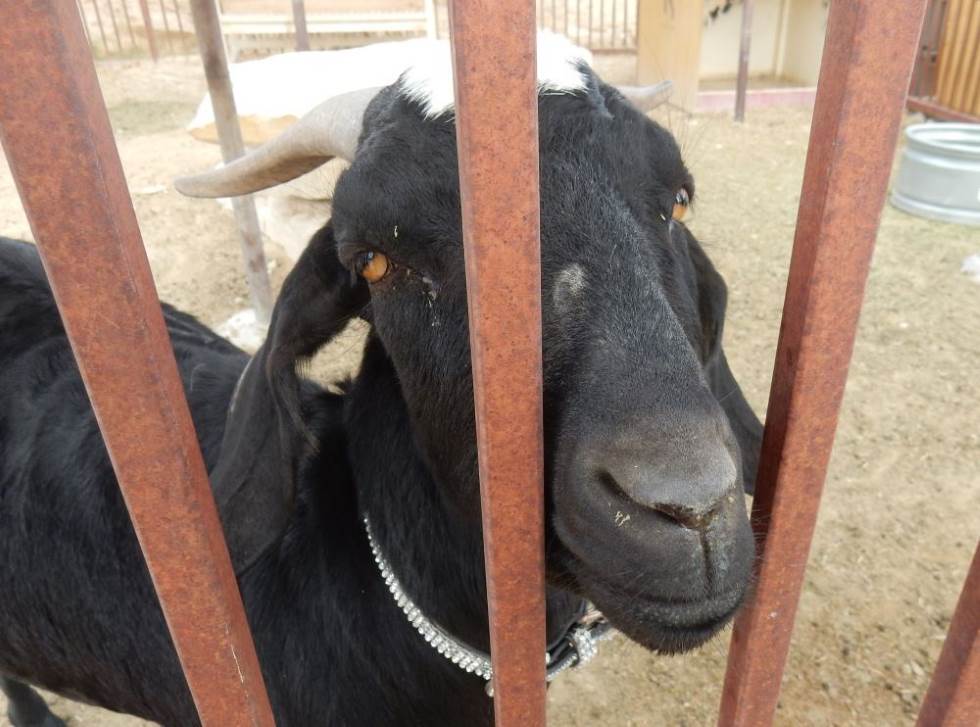
Day Two: Chisos Basin
Head straight for the heart of the park on your first full day of exploration. The Chisos Mountains are a collection of heavily eroded and exceptionally dramatic mountain peaks right in the middle of the park. At the pinnacle of these mountains is the Chisos Basin. A vast, natural amphitheater where you can be on a mountain, while at the same time being surrounded by walls of stone rising up in nearly every direction. Because it funnels the rain into the basin, it is lush with vegetation compared to the dryer desert lowlands that surround it.
Marvel at the incredible views all the way up until you reach the end of the road at the Chisos Visitors Center. Check in with the rangers at the visitors center to get the lay of the land, maps, schedule of events, safety tips, and catch up on the road conditions. A pinboard on the wall shows recent animal sightings in the park, including black bears and mountain lions. Maybe sign up for a ranger-led hike on Lost Mine Trail later in the day. Then grab some snacks at the store and check out the very short Window View Trail loop that offers spectacular views of the Basin.
Now its time for your ranger-led hike. Lost Mine Trail is a 5-mile hike that ascends nearly 1,000 feet. All along the way, you can enjoy spectacular views of the Chisos Mountains. Your ranger guide points out the noteworthy plants and animals as you travel. They also tell you some of the history of the park and many of the best places to go exploring this time of year. By the end of the trail, you will feel winded, but accomplished. The spectacular view from the rocky outcropping at the terminus is well worth the climb.
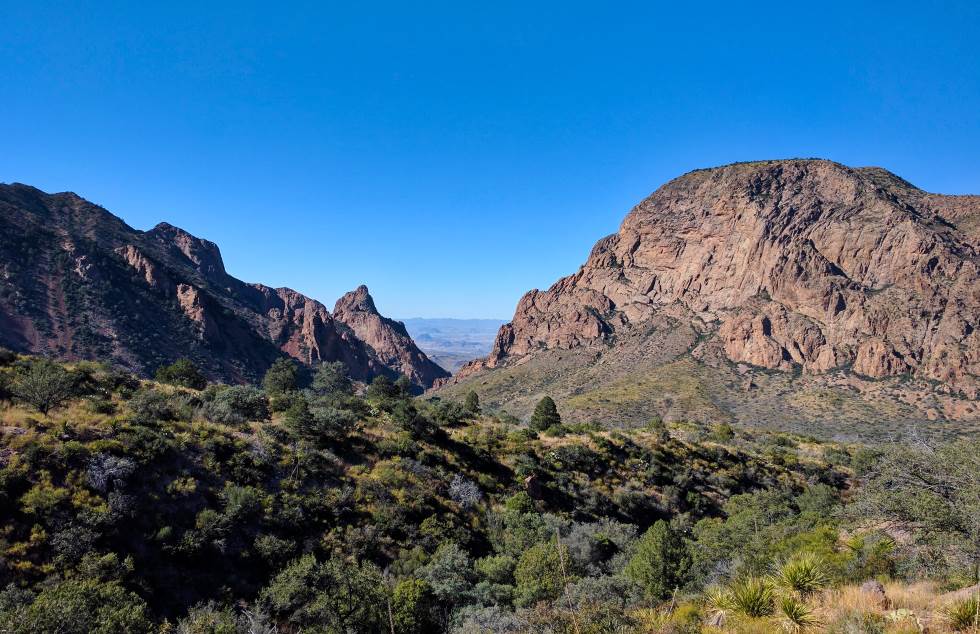
Day Three: Santa Elena Canyon & Ross Maxwell Scenic Drive
For day three, set your sites on the western side of the park. Your goal is to explore Santa Elana Canyon. To get there, you must travel the Ross Maxwell Scenic Drive. There are a number of scenic turnoffs along the drive, so stop frequently to enjoy the scenery and take pictures of the dramatic landscape. The dramatic twin stone towers of Mule Ears beckons exploration. At Tuff Canyon, you can look down and see winding slot canyons spider outwards from the overlook.
At Santa Elena Canyon, the Rio Grande cuts along the U.S.-Mexico border. Towering cliffs shadow the valley below. The river’s edge of the Rio Grand teems with life amidst the otherwise dry and barren land. Most of the year, the Rio Grande isn’t really all that large a river. Its waters are utilized for drinking water and agriculture all the way from its source to its final destination in the Gulf of Mexico. Don’t forget to take the hike up into the canyon!
The going is a bit tricky ,but makes for a fun hike. First, you have to find a good spot to cross over small tributaries to get to the far bank. There you make your way through small trails in thick vegetation at the banks of the river. Emerging from the vegetation, a steep-cut path winds its way up the canyon giving you spectacular views of the river. From there, you wind your way down again into the canyon with steep walls rising to either side. Your footsteps echo off the walls and ravens cry far above. Heading to the end you’ll find solitude along the river’s banks in this temple of stone.
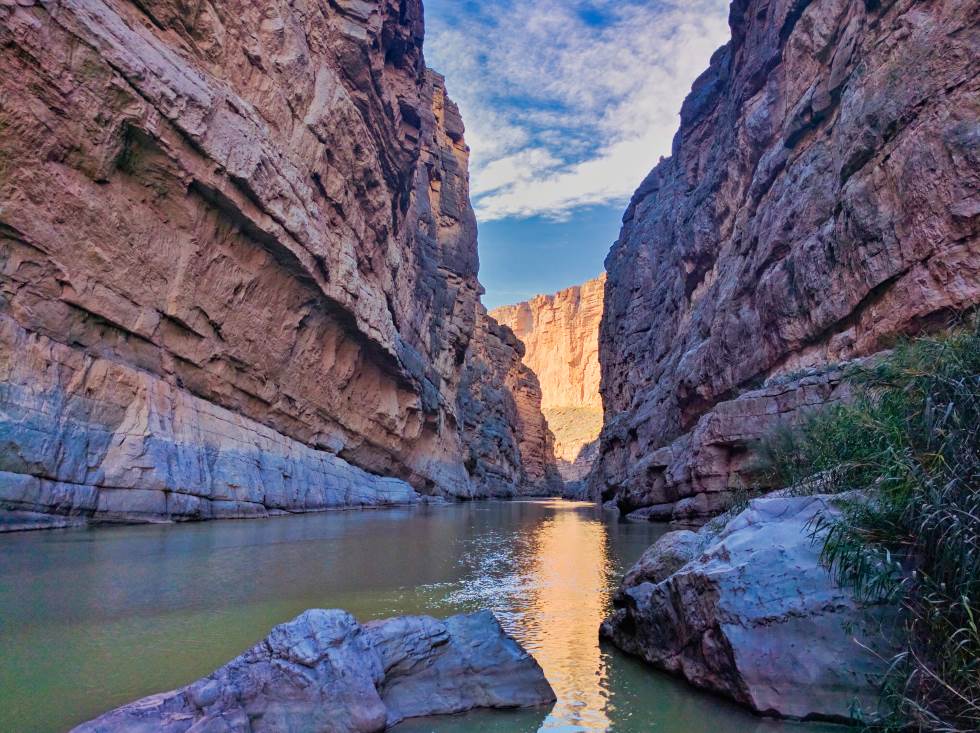
Day Four: Boquillas Mexico & Boquillas Canyon Trail
Today’s destinations are on the opposite end of the park, as far southeast as you can drive. Start out by walking Boquillas Canyon Trail. Like Santa Elana, this Canyon is formed by the passage of the Rio Grande, but here the walls are not so high and the trail is easier to follow. Stop to watch roadrunners trying to catch lizards and insects. Near the canyon itself, you will also find cliff swallows darting from their mud nests and foraging for insects on the surface of the water.
Once you finish with your short hike, cross the Rio Grande and visit the Mexican village of Boquillas Del Carmen. Have your passports ready and a small supply of U.S. cash. Boquillas is a very small and remote town so there are no banks or ATM machines. But they do take American currency, indeed, it is the life’s blood of this tiny town.
To cross over, you must go through U.S. customs. It only takes a few minutes each way and there are no roads. Just walk through the customs and pay a ferryman on the Mexican side to take you across the river.
Once in Mexico, you can either take a short walk or hire a donkey or car to take you to the village. Walking the streets, you can explore the tiny Catholic church, buy handcrafted souvenirs from the local residents, and admire the small brightly painted homes. Signs of modernity are few and far between. I’d suggest an early supper at one of the few restaurants in the center of town. In our experience, the food was great and the view of the Rio Grande from the veranda was picture perfect. The staff at the restaurant also spoke English and shared the history of the village.
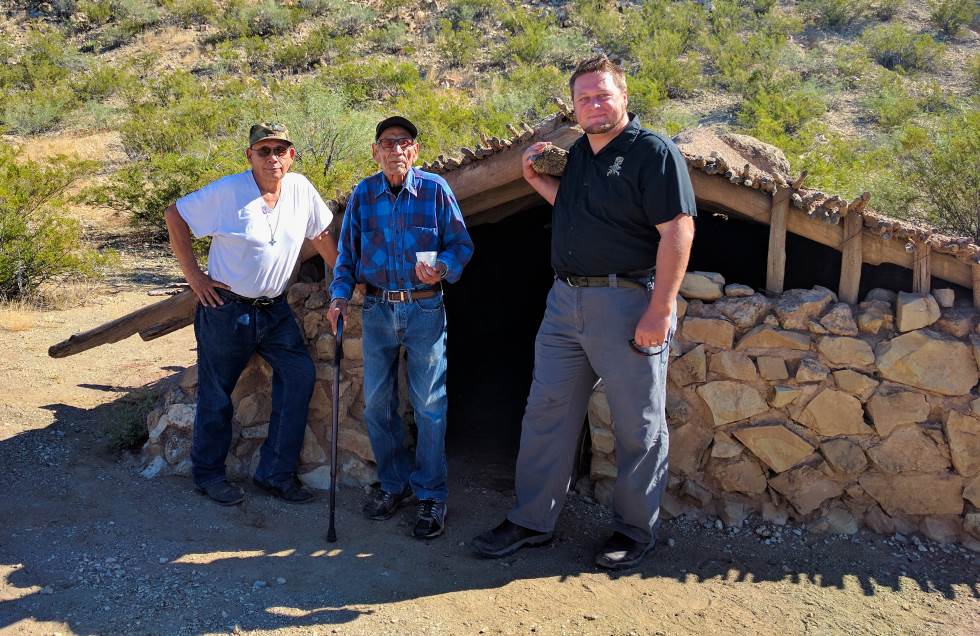
Day Five: Mule Ears Hike & Terlingua
Having seen the Mule Ears from a distance on day three, take today to get a closer look. The Mule Ears Spring Trail leads from the roadside viewing point out across the desert. Along the way, traverse moonscape-like terrain scattered with the desert plants you have now become familiar with. Along the way, discover the ruins of an old ranch, slowly being reclaimed by the desert.
While the trail doesn’t take you to the Mule Ears themselves, you can get a great view. They are both parts of the same eroding mountain, slowly crumbling to dust over the millennia. On the drive back, take a break from nature and hit up one of the local tourist hot spots: Terlingua ghost town.
Terlingua, while built amidst the ruins of a ghost town, is very much alive and kicking. The old mining town has sprung an artists colony with a collection of restaurants and gift shops catering to tourists. Spend the evening wandering the eccentric shops and wrap up the day with hot food, cold drinks, and the scarlet sun setting across the desert landscape.
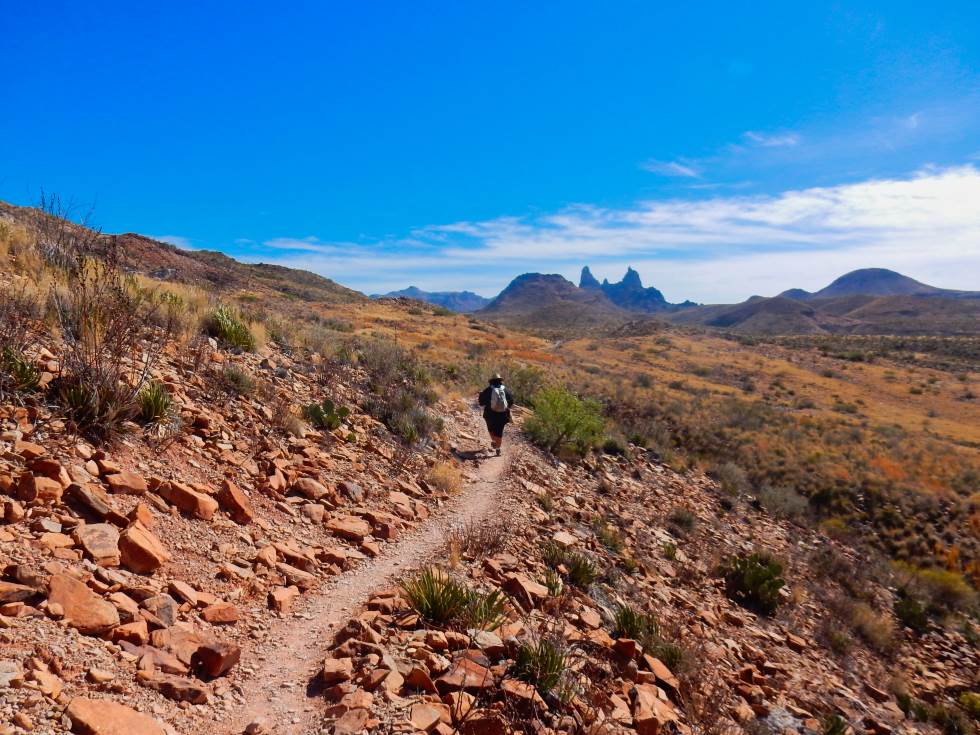
Day Six: Grapevine Hills & Hot Springs Canyon
For your last full day, make your way east again. First stop is the Grapevine Hills. To get there, you must take a one-lane dirt track deep into the desert. Your goal is Grapevine Hills Trail, culminating in a dramatic viewing point dominated by a massive suspended boulder. The trail is not long, but there is a bit of climbing to be done towards the end if you want to reach the top. Persevere to be rewarded with spectacular views and sandstone formations that spark your imagination and sense of wonder.
Determined to give those hard working legs of yours a treat after all the hiking, make your way to Hot Springs Canyon. The first thing you encounter there are the empty buildings from the time when this location was a private tourist destination. An old adobe store has been preserved on the site and interpretive signs teach you about the history of the place. Once again, you’ll find yourself exploring the banks of the Rio Grande. But instead of canyons, you will find a lush strip of land surrounded by low hills covered in shale-like plates of stone. They crunch under your feet as you explore the landscape and admire the views.
Wandering along the course of the river on a well-trod path, arrive at the remains of the old spa. Right along the river’s edge, the waters of the natural hot spring spill up into old concrete and stone forms creating a giant hot tub. Come prepared with your swimwear under your hiking clothes and strip down to settle into the warm waters. It’s a popular spot so you won’t be alone here, but you can find lively conversation with fellow travelers while your tired muscles recuperate.
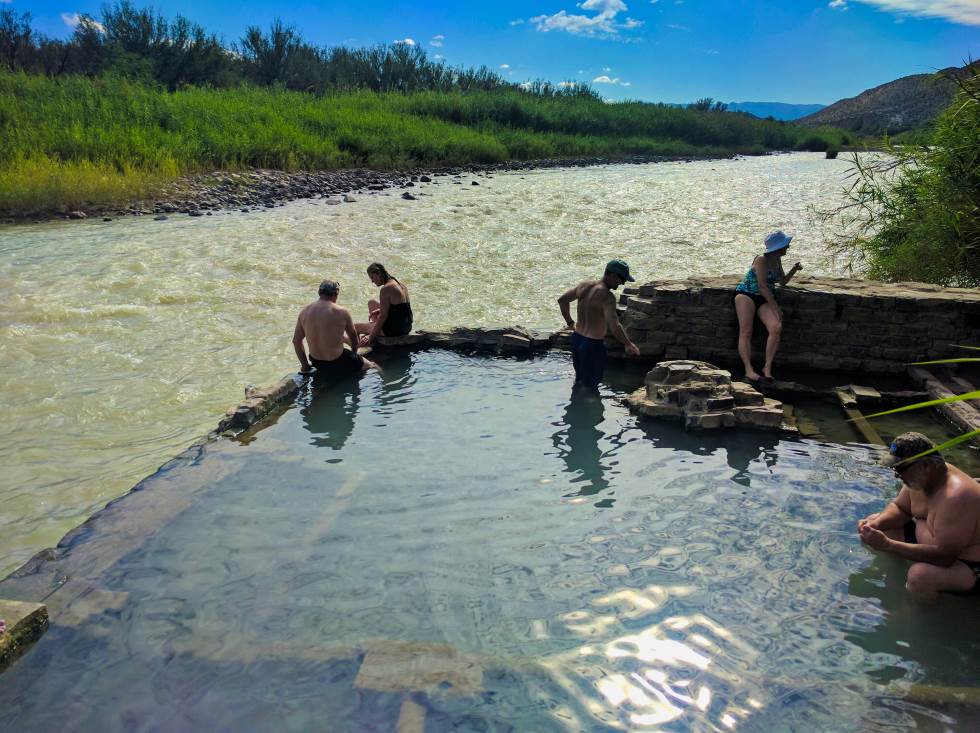
Day Seven: Persimmon Gap
With a long ride home, get an early start and drive through the northern end of Big Bend on your way back. This takes you past the newly opened Fossil Discovery Exhibit. Take a short stop and learn about the natural history of Big Bend. Like most of the desert south, the now desolate badlands were once lush tropical environments and the creatures that once roamed the earth there are now preserved in stone.
Continuing your drive, bid the mountains goodbye and move out into the great planes of Texas. Passing through Persimmon Gap at the northern edge of the park, reflect on the grand adventures you had and the enduring beauty of West Texas.
Ready for your week in Big Bend National Park? Search for a great RV as the base for your adventure now!

